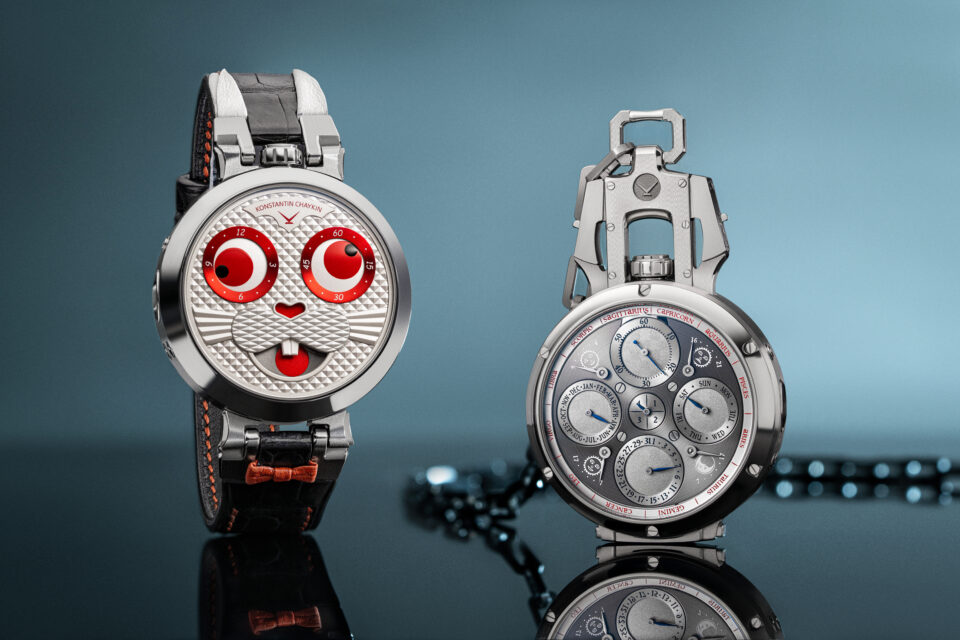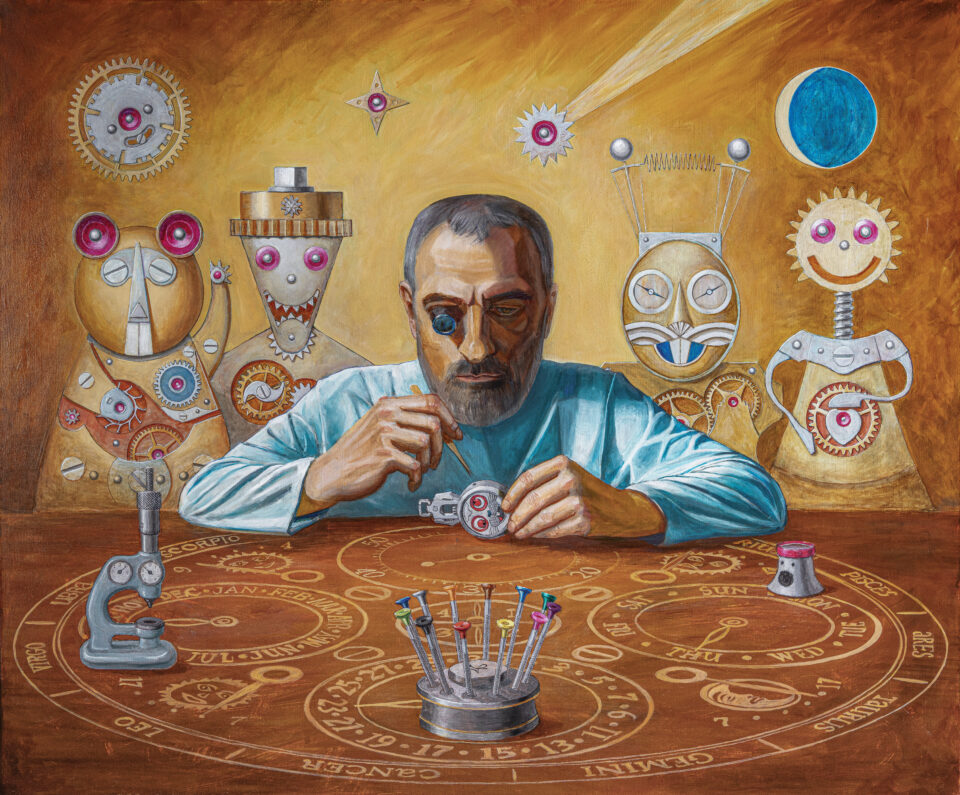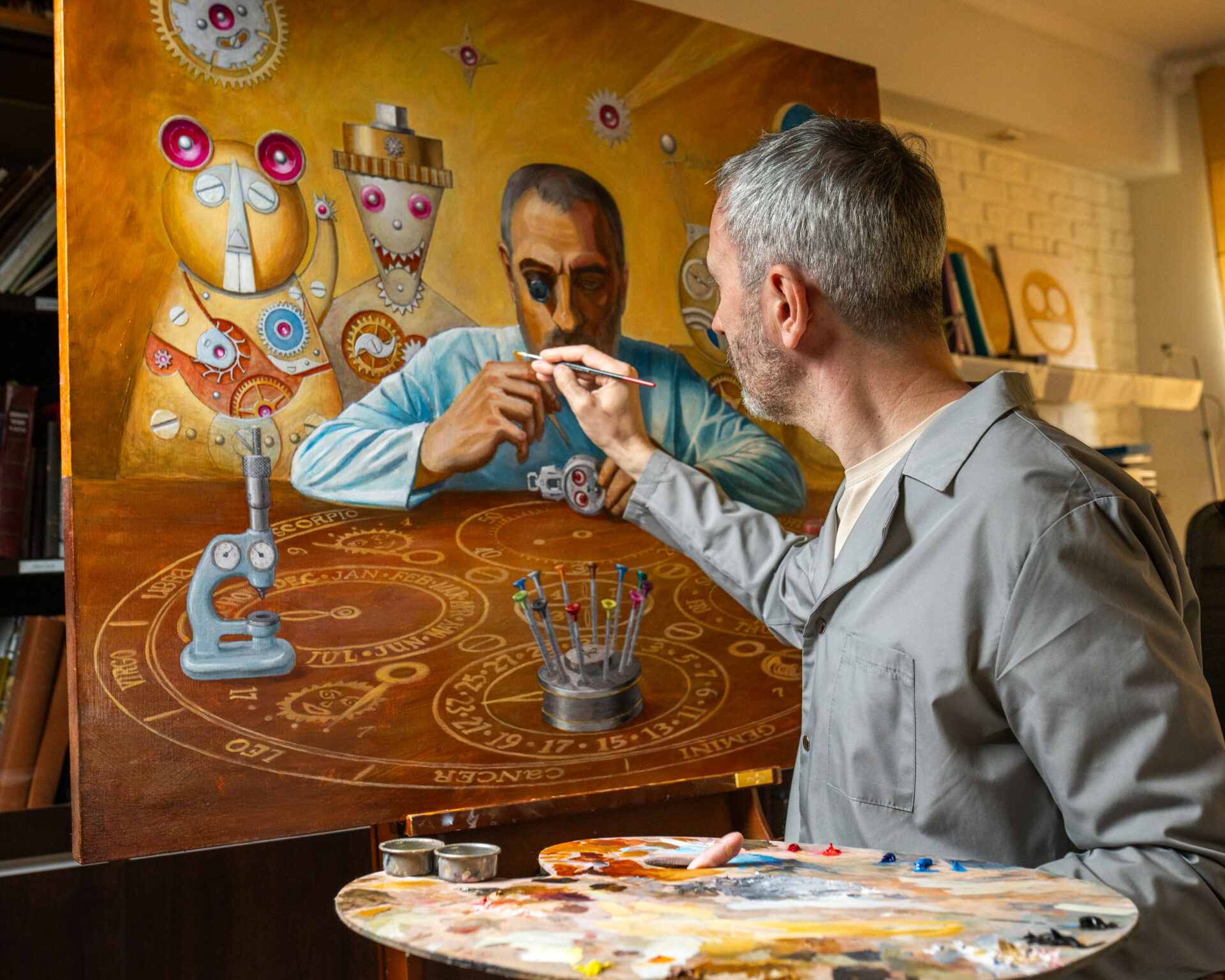In the Museum of Modern Art in New York City hangs one of Surrealism’s most celebrated paintings. Salvador Dalí’s The Persistence of Memory (1931) features three distorted watches, melted and draped across a rugged Catalonian landscape. The wilting clocks – which the artist compared to melting Camembert cheese – mock the rigidity of chronometric time. Dalí is not the only artist to use a timepiece as a central character. Watches appear in the self-portraits of Francis Bacon and are the focal point of Christian Marclay’s acclaimed installation The Clock (2010), a 24-hour long montage of thousands of film and television images edited together so they show the actual time. Again and again, artists return to time, and the objects we use to measure it, as metaphors for how we live, remember and experience the world.
Artist Konstantin Chaykin joins this strong lineage, creating works that move fluidly between two distinct fields. His practice is unique in that it spans both the mechanical construction of watches and their imaginative representation in painting. This gives him a distinctive vantage point from which to explore timepieces, allowing him to appreciate and express their technical intricacies as well as their aesthetic beauty. Chaykin’s newest painting is a self-portrait depicting the creation of the highly complex White Rabbit watch, one of his most recent masterpieces. It is a “grand complication” piece, placing it among the twenty most complicated wristwatches in the history of horology. The painting makes its debut at Dubai Watch Week this November, where Chaykin will offer visitors an insight into the mastery behind White Rabbit and allow audiences to step into his imagination.

Both the watch and the artwork were inspired by Lewis Carroll’s Alice in Wonderland. It’s another iconic representation of time and clocks in popular culture, with infamous lines like the Mad Hatter’s “it’s always six o’clock now.” Chaykin was particularly fascinated by Chapter 7 of the book, using its title, A Mad Horological Party, for his painting. The spark first came during the development of his White Rabbit watch, when Chaykin drew upon Carroll’s notion that time had been suspended at the party – “It’s always tea-time” – as well as the puzzling idea that a watch can display the day of the month and the even the year, without actually telling the time. Both ideas eventually became features of his own watch.
The painting continues this line of imagination. It shows Chaykin assembling the White Rabbit watch, surrounded by characters from Alice in Wonderland: Alice, the March Hare, the Dormouse and the Hatter. In a fitting reimagining of the original, each figure is made up of the cogs, nuts and bolts that would usually go into the creation of a timepiece. Yet, they maintain their distinct personalities, with Alice in a playful dress and broad smile, and the rabbit with narrowed eyes and tall ears made from wire. Chaykin himself is at his workbench, concentrating on the job at hand. These mechanical figures connect to earlier paintings that helped Chaykin develop the ideas behind A Mad Horological Party, such as March Har.1, Sedmitsa, Ahasuerus, and Dormouse. Each work explores a different aspect of the story, and some, especially Ahasuerus, stand as independent artworks with their own narratives.

As a recognised master of Haute Horlogerie with more than a hundred patents, AHCI membership, a WIPO Gold Medal and inclusion in the Temporis Hall of Fame, Chaykin naturally extends his technical expertise into contemporary art. His inventions — from the world’s thinnest mechanical wristwatch to Russia’s most complicated watch and the iconic Wristmons, including the world’s first self-portrait wristwatch — have become cultural references that organically expand into painting. By creating a synthesis of painting, mechanics and philosophy — he introduces a new genre — Horological Art. As a self-taught master in both spheres, he forms a distinct language that positions him among the few creators who define new directions in culture.
Dubai Watch Week runs from 19th to 23rd November: dubaiwatchweek.com
White Rabbit and A Mad Horological Party will be on sale at Ineichen Auctioneers, Zurich on 13 December: ineichen.com
Find out more about the artist: art.konstantinchaykin.com
Image Credits:
All images courtesy of Konstantin Chaykin.





